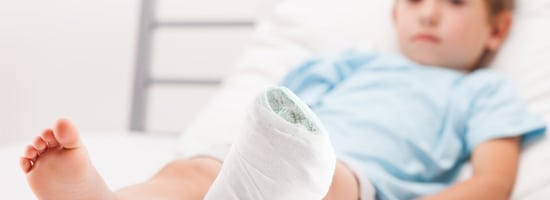
Common Orthopedic Problems in Kids
Orthopedic problems can affect children just as often as adults. While some problems may be the result of an accident, others may be congenital and present at birth. The following is an overview of common orthopedic problems in kids and how they are treated.
Juvenile Arthritis
Kids who complain of pain in the joints for an extended period of time may have juvenile arthritis. According to the American Academy of Orthopaedic Surgeons, juvenile arthritis affects as many as 250,000 children in the United States under the age of 16 years. There are three different types of juvenile arthritis that can affect different parts of the body. Some of the most common symptoms of this condition include:
- Joint swelling
- Painful joints
- Joints that are hot to the touch
- Growth problems
- Eye problems
- Rash
- High fever (in short spurts)
- Weak joints
Children who exhibit the symptoms associated with juvenile arthritis should be evaluated by a doctor to obtain a diagnosis. Prompt diagnosis and treatment is key to preventing further joint damage as the child ages.
Ankle Fractures
Active children are at an increased risk of developing ankle fractures, also known as a broken bone. These fractures are more likely to occur than broken bones to the shin or thigh. Ankle fractures that occur near the growth plate in the foot may require surgical intervention. The most common symptoms of ankle fractures include:
- Ankle pain
- Swelling of the foot and ankle
- Bruising over the ankle joint
- A crooked appearance to the foot
Open ankle fractures are also common in children. When this occurs, there is a tear in the opening of the skin that increases the risk of infection. It is important to have a possible fracture examined by a doctor for diagnosis and treatment right away.
Scoliosis
Scoliosis is an orthopedic condition that is most often diagnosed after 10 years of age. While some kids have mild forms of the condition, others may require surgery to halt the progression of the curvature of the spine. The symptoms associated with scoliosis include:
- One hip that is more prominent than the other
- Uneven shoulders
- Rib prominence
Severe scoliosis should be evaluated by an orthopedic surgeon to determine if corrective surgery is necessary. While the curvature that exists cannot be corrected without surgery, doctors often use bracing to attempt to halt the progression of the curvature.

